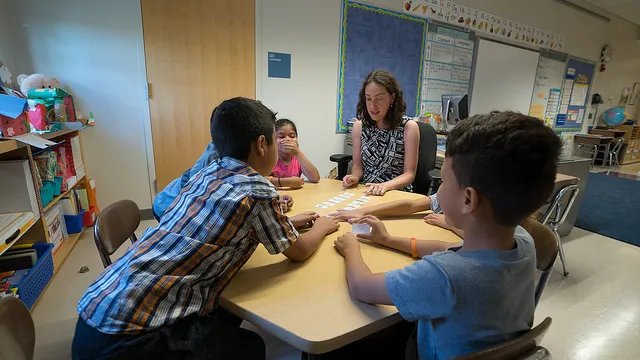Challenges With ELL Specialist and Classroom Teacher Collaboration


Challenges With ELL Specialist and Classroom Teacher Collaboration
We all know that collaboration is key to student success, especially as it relates to English language learners. And, we’ve certainly been talking about collaboration a lot lately. But what does collaboration look like in schools today? More importantly, what should it look like to ensure that schools and teachers get the desired results for their ELL students? For perspective, we spoke with a few educators to understand what collaboration looks like in their districts today - the good and the bad.
First, the bad news. From dozens of conversations with classroom teachers across the country, we know that many of them feel unprepared to teach ELLs. One recent conversation with a middle school social studies teacher from Indiana highlighted the problem: in his district, a thirty-five minute PD session was offered to classroom teachers at the beginning of the year to discuss teaching ELLs in content areas, but there hasn’t been any follow up since the training. Unlike the ELA teachers at his school, this particular teacher currently doesn’t receive much support from the ENL specialist. Occasionally he reaches out to the ENL department for help, but only as it relates to discipline or concerns of student well-being.
To be fair, Indiana is currently in the middle of a transition to join 36 other states in the WIDA consortium. Maybe the new transition will bring about new learning opportunities and support for classroom teachers at this particular school. But then again, many of the obstacles preventing more effective collaboration today are likely to persist: high caseloads among ESL specialists, difficulties with scheduling and communication, and competing district priorities. These obstacles are common in most school districts, in all states, and many students suffer as a result.
But there is also good news. District and statewide efforts to empower classroom teachers with training to support ELLs are increasingly prioritized by leaders at all levels. And in most cases, effective implementation is premised on collaboration between classroom teachers and ESL / Bilingual specialists. A few examples:
- At the SEA level, this is evidenced by Massachusetts’ RETELL initiative announced by Mitch Chester two years ago, which has significantly increased the number of SEI-certified content area teachers in the Commonwealth. No surprise, many RETELL courses are delivered by ELL teachers.
- We are also intrigued by the work done in partnership with the University of Georgia and Habersham, Hall, and Gainesville Public Schools to certify content area teachers through the GECAT Program. Our friends in Habersham now have more options for serving students when all educators are speaking from the same playbook.
- And at the local level, we have been impressed by the efforts of classroom teachers throughout California to transition their instructional practices from those based on “Designated ELD Time” to new practices based on “ELD All-the-Time.” This is a logical, but not easy, response to the new requirements of the Common Core and the ELA/ELD framework.
As schools and ELL programs throughout the country wrestle with how to support teachers on new approaches to their ELLs, one anecdote from our friend Mandy Tukiendorf stands out as particularly promising. An ELL teacher and coordinator in Milton School District, Mandy helps organize teacher PD that is derived from teacher needs and feedback. While they have benefited from strong relationships with a local university, and their CESA - both of whom provide important resources and support - Mandy attributes their strongest professional development to opportunities derived from teacher needs. “I am thankful for the strong working relationships we have with our teachers,” she said. “These relationships allow us to recognize needs, respond to them appropriately and work as a team to support our students in the classroom.” Awesome.
At Ellevation, we are inspired by the examples above. Best practices should be shared and emulated; challenges should be addressed and solved. For our part, we are busy putting the finishing touches on InClass, a software tool specifically designed for classroom educators that helps bridge the gap with ESL / Bilingual specialists. InClass will help classroom teachers identify their ELLs, understand more about their ELLs’ language needs, and allow for easy communication with the team of teachers serving each student. We believe it is one important piece of the solution to improved collaboration, and we look forward to sharing more about it this week.
Share with us - what has worked well in your district around collaboration? What has been challenging?